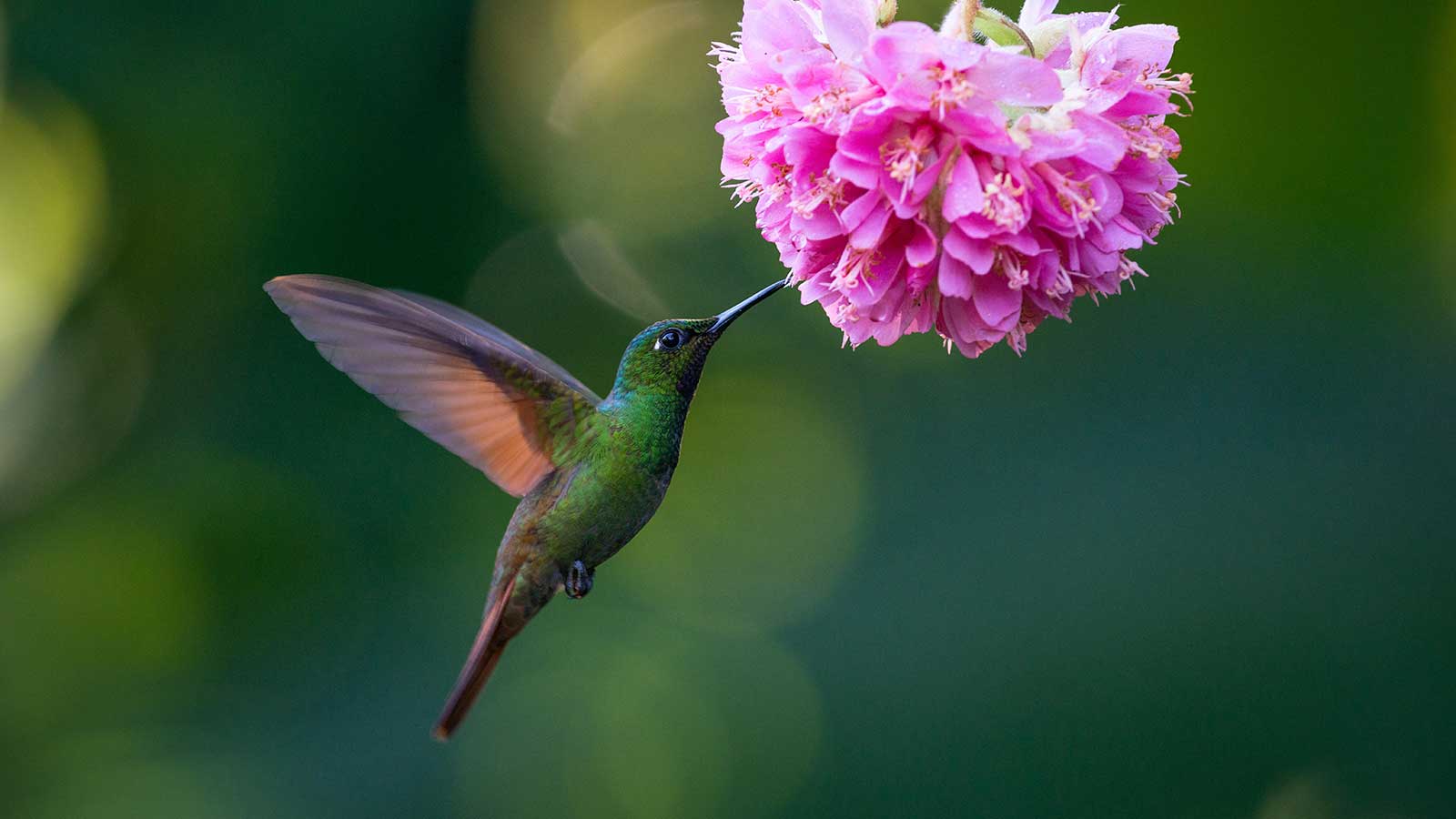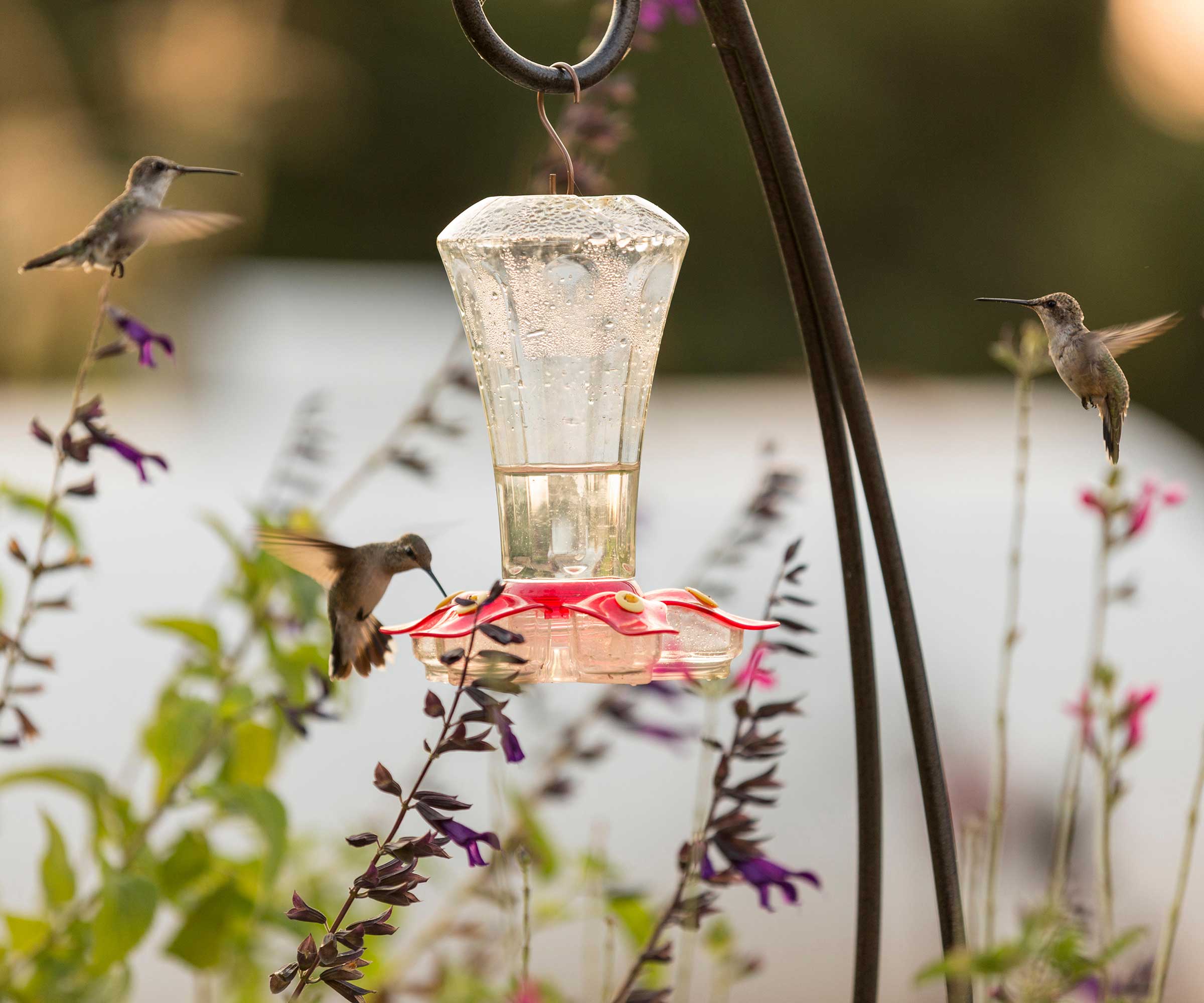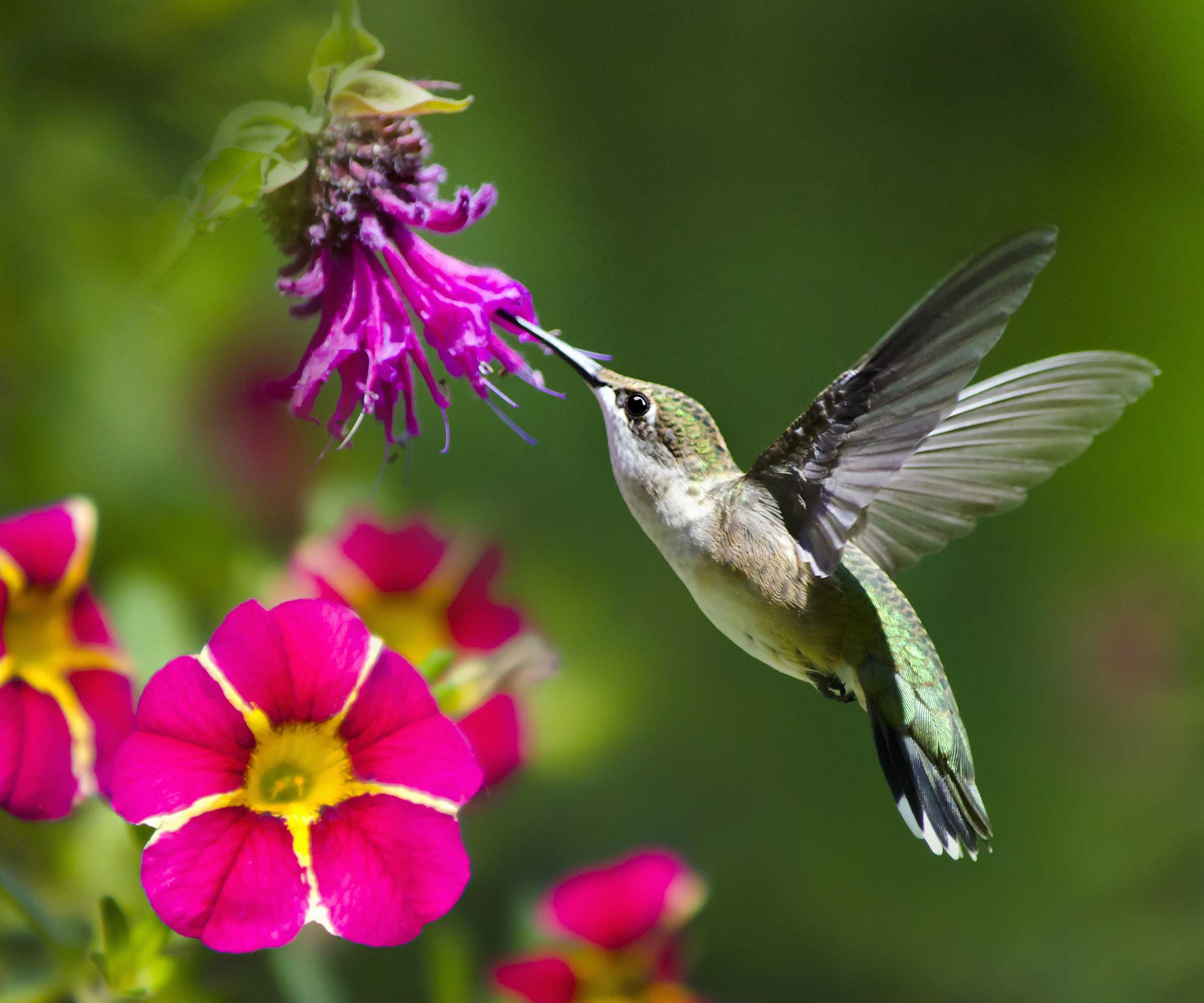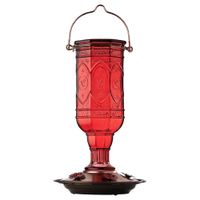What do hummingbirds eat? – their diet explained, plus tips on providing food in your yard
Give these feathered friends a helping hand by offering a variety of food sources


As temperatures warm, the sight of a hummingbird or two becomes an exciting prospect. These colorful creatures may be tiny but they're a delight to watch, especially if it's from your own patio or kitchen window.
It's no surprise that many homeowners look for ways to attract hummingbirds to their backyard – and providing food is one of the best ways to do so. However, it's not just sugar water that these feathered friends feed on, as this guide explains.
Nectar
Putting out feeders filled with shop-bought or homemade hummingbird nectar will encourage a visit from these feathered friends. Planting nectar-rich flowers that attract hummingbirds will also provide this important source of food.
However, as Kelsey Waddell (an expert from WildBirdScoop.com) and Zach Hutchinson (Owner of FlockingAround.com), reveal, their diet is more varied than this. 'In fact, a diet of only nectar and sugar water would not sustain a hummingbird beyond a few days,' Zach says. 'Consider the sugar goodness provided by flowers and feeders to be the recharge needed by hummingbirds when they plug their bills in. This gives them the energy to find and consume the other main component of their diet, arthropods.'
More Birds Red Glass Hummingbird Feeder | $24.87 from Amazon
This glass hummingbird feeder has five flower-shaped feeding ports and looks super stylish hanging from a hook or branch. The red color will help to attract these feathered friends.

Zach Hutchinson is the owner of FlockingAround.com and an ornithologist striving to ignite bird conservation globally. He is also the creator of the Great Wyoming Birding Trail and the author of Birding in Yellowstone National Park. Zach has banded and tagged over 15,000 wild birds and has efforted to protect birds for over a decade. However, he also crawled in the muck and grime in the world of reptiles and amphibians (and loved every moment) before his work with birds, as he worked in alligator conservation on the gulf coast to mitigate human and alligator conflicts.

Kelsey is a freelance writer and amateur backyard-bird enthusiast living in southern Virginia. From the moment she moved from the suburbs to her current rural home, she was struck by the sights and sounds of the abundant wildlife. She's been watching, learning, and trying to attract more feathered friends ever since.

Hummingbird feeders will attract these creatures
Insects
Zach explains how insects provide the protein and other nutrients necessary for hummingbirds' healthy bone and feather growth.
'In flight, hummingbirds will "hawk" insects by catching them mid-flight,' says Zach. 'What often appears as indiscriminate flight patterns is actually our favorite hummers hunting insects that are often too small for our eyes to see without a closer perspective.
'Included in the list of insects taken in flight include small bees, flies, gnats, mosquitoes, and spiders (spiders do not fly, per se. Instead, they float with style).
'These are not the only arthropods taken,' he continues. 'These feathered friends also help control other insects by "gleaning" aphids off of plants. They will even eat the larvae and eggs of moths, butterflies, and other invertebrates.'
Avoiding pesticides, using organic gardening practices, and planting a variety of flowers and shrubs will help to keep insect populations up and therefore attract more hummingbirds, Kelsey explains.
Sap
If nectar and insects aren't readily available, hummingbirds can feed on sap. 'Hummingbirds will use the sap wells of sapsuckers, a type of woodpecker,' says Zach. 'These sap wells are drilled open by the sapsuckers, and then the wells fill with the sticky lifeblood of the tree.
'Hummingbirds will use this sap as a backup resource, but just as importantly, hummingbirds will consume the insects that are attracted to, and get stuck in, the sap.'
'Consider planting trees that produce sap, such as maple or birch,' recommends Kelsey. 'If you already have these trees in your yard, you’re in luck – just be sure to avoid using any chemicals or pesticides on these trees.'

Hummingbirds have a varied diet
Overall, hummingbirds need a mix of food sources to thrive, just like humans. And growing native flowers, bushes, and trees in your yard is a great way to offer this, as Zach advises.
'These all can provide nectar and sap, but just as importantly, native insects depend upon native plants,' he says. Plus, the plants will create a beautiful botanical display for you to admire, too.
Sign up to the Homes & Gardens newsletter
Design expertise in your inbox – from inspiring decorating ideas and beautiful celebrity homes to practical gardening advice and shopping round-ups.

Holly started writing about gardening five years ago, and she is a regular contributor to Homes & Gardens. She has also written many gardening features for Woman & Home and Real Homes, too. She has previous experience as a professional gardener, where she helped to plant and maintain private gardens. Holly has also looked after allotment plots over the years and loves to grow her own flowers and veggies from seed. In her spare time, she enjoys visiting local gardens, botanical drawing, and tending to her ever-growing collection of houseplants.
-
 7 of the best tomatoes for growing in pots - expert growers pick their top varieties ideal for large harvests from containers
7 of the best tomatoes for growing in pots - expert growers pick their top varieties ideal for large harvests from containersYou can enjoy bumper homegrown harvests in small spaces
By Drew Swainston Published
-
 Drew Barrymore creates a 'balanced' kitchen in 4 easy steps – her rules will make your small, compact countertops feel beautiful
Drew Barrymore creates a 'balanced' kitchen in 4 easy steps – her rules will make your small, compact countertops feel beautifulDrew proves that with the right styling (and chic appliances), you can make even the smallest of kitchens look harmonious
By Hannah Ziegler Published
